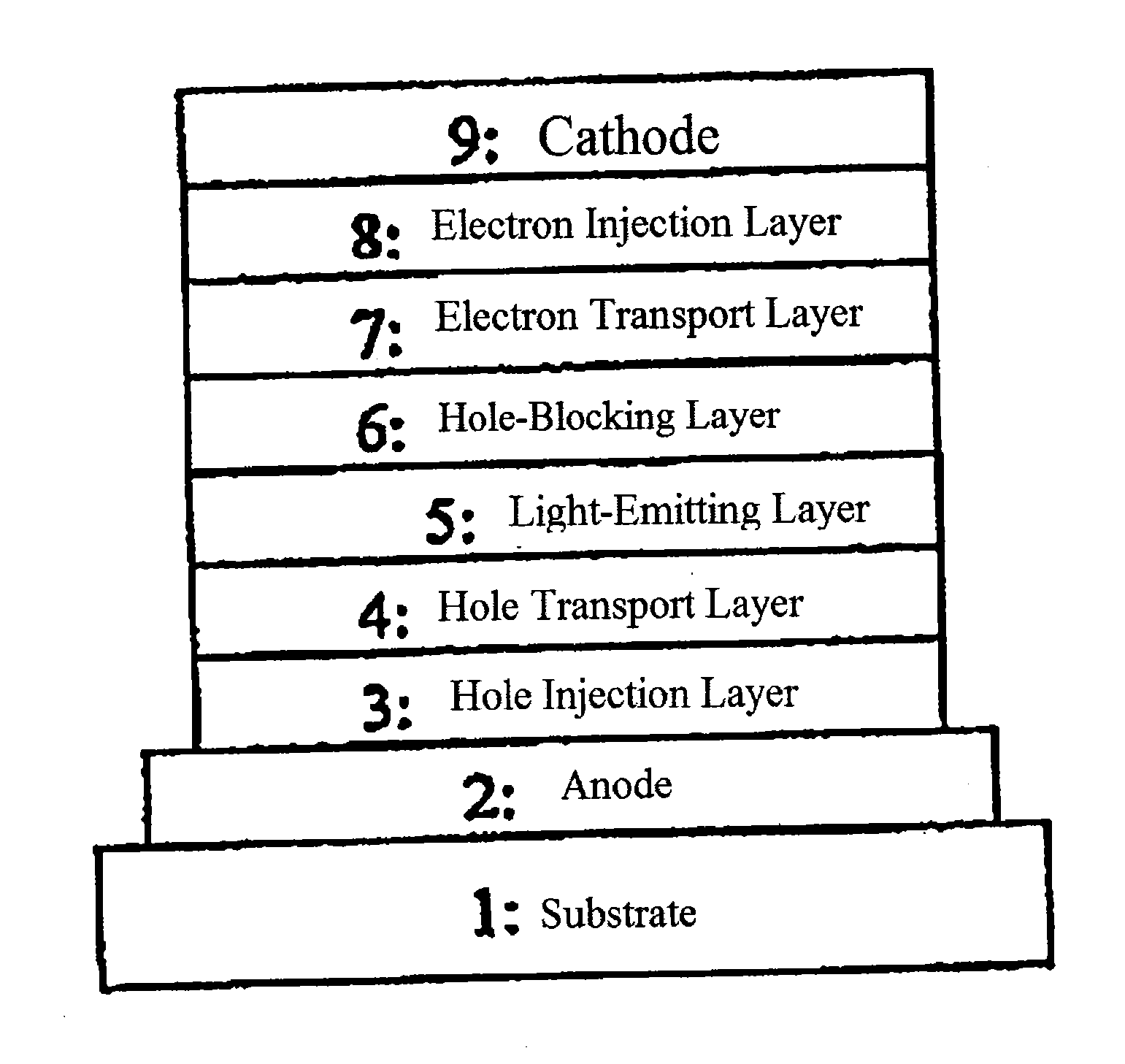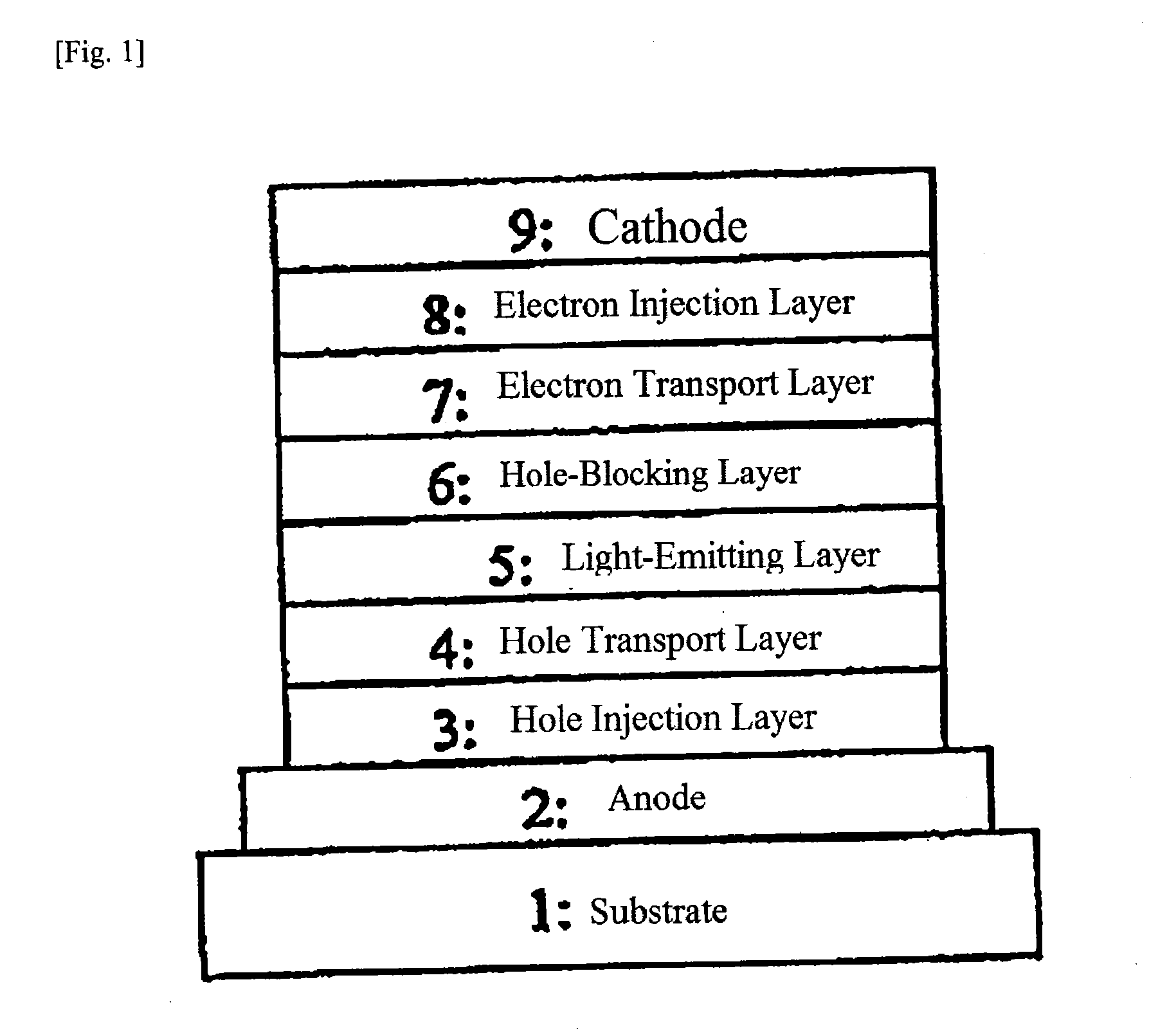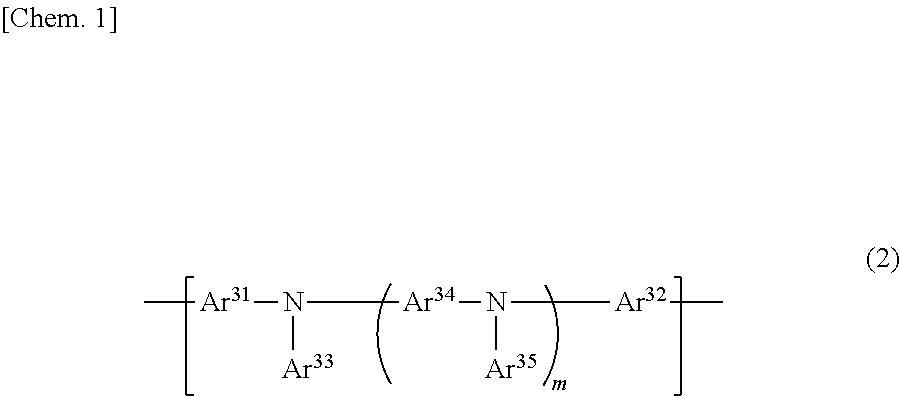Composition for organic electroluminescent elements and organic electroluminescent element
a technology of organic electroluminescent elements and organic electroluminescent elements, which is applied in the direction of pipes, solid-state devices, non-conductive materials with dispersed conductive materials, etc., can solve the problem of extremely high contamination level, achieve uniform film formation, high technical value, and long driving life
- Summary
- Abstract
- Description
- Claims
- Application Information
AI Technical Summary
Benefits of technology
Problems solved by technology
Method used
Image
Examples
synthesis example 1
Synthesis of Aromatic Amine Polymer (P1-1)
[0680]An aromatic amine polymer (P1-1) was synthesized according to the following reaction formula:
[0681]In a nitrogen stream atmosphere, N,N′-bis(4-hydroxyphenyl)-N,N′-diphenyl-p-phenylenediamine (1.00 part by weight), 4,4′-difluorobenzophenone (0.49 parts by weight), potassium carbonate (1.87 parts by weight) and 1-methyl-2-pyrrolidone (23.13 parts by weight) were stirred at 131° C. for 9 hours.
[0682]The resultant reaction mixture was cooled, and the insolubles were removed therefrom through intermediate filtration. The resultant filtrate was added to methanol to give a precipitate. This was collected through filtration, and dried under reduced pressure at 60° C. for 6 hours to give a crude composition 1-1.
[0683]The crude composition 1-1 was dissolved in tetrahydrofuran, and normal heptane was added to the solution, and stirred at 20±5° C. for 30 minutes to give a precipitate. The supernatant was removed through decantation to give a preci...
synthesis example 2
Synthesis of Aromatic Amine Polymer (P1-2)
[0698]In the same manner as in Synthesis Example 1, in which, however, the starting material lot of the starting materials, N,N′-bis(4-hydroxyphenyl)-N,N′-diphenyl-p-phenylenediamine and 4,4′-difluorobenzophenone was changed, the same aromatic amine polymer (P1-2) (weight-average molecular weight (Mw)=24,000) as the aromatic amine polymer (P1-1) was produced.
synthesis example 3
Purification of Aromatic Amine Polymer (P1-2)
[0699]105 parts by weight of tetrahydrofuran and 345 parts by weight of toluene were added to 50 parts by weight of the aromatic amine polymer (P1-2) produced in Synthesis Example 2 to give a uniform solution. Further, 500 parts by weight of 1 N hydrochloric acid was added to the solution, stirred and processed for liquid-liquid separation.
[0700]The resultant organic phase was washed three times with 500 parts by weight of water. 630 parts by weight of toluene was added to the separated organic layer, and the toluene solution of the organic layer was led to pass through a mixed bed ion-exchange resin layer formed by mixing 167 parts by weight of a strongly-acidic cation-exchange resin (Mitsubishi Chemical's trade name “Diaion (registered trademark) WK11 (trade name)”) and 83 parts by weight of a strongly-basic anion-exchange resin (Mitsubishi Chemical's trade name “Diaion (registered trademark) SAN1 (trade name)”).
[0701]The eluate was fil...
PUM
| Property | Measurement | Unit |
|---|---|---|
| diameter | aaaaa | aaaaa |
| pH | aaaaa | aaaaa |
| temperature | aaaaa | aaaaa |
Abstract
Description
Claims
Application Information
 Login to View More
Login to View More - R&D
- Intellectual Property
- Life Sciences
- Materials
- Tech Scout
- Unparalleled Data Quality
- Higher Quality Content
- 60% Fewer Hallucinations
Browse by: Latest US Patents, China's latest patents, Technical Efficacy Thesaurus, Application Domain, Technology Topic, Popular Technical Reports.
© 2025 PatSnap. All rights reserved.Legal|Privacy policy|Modern Slavery Act Transparency Statement|Sitemap|About US| Contact US: help@patsnap.com



